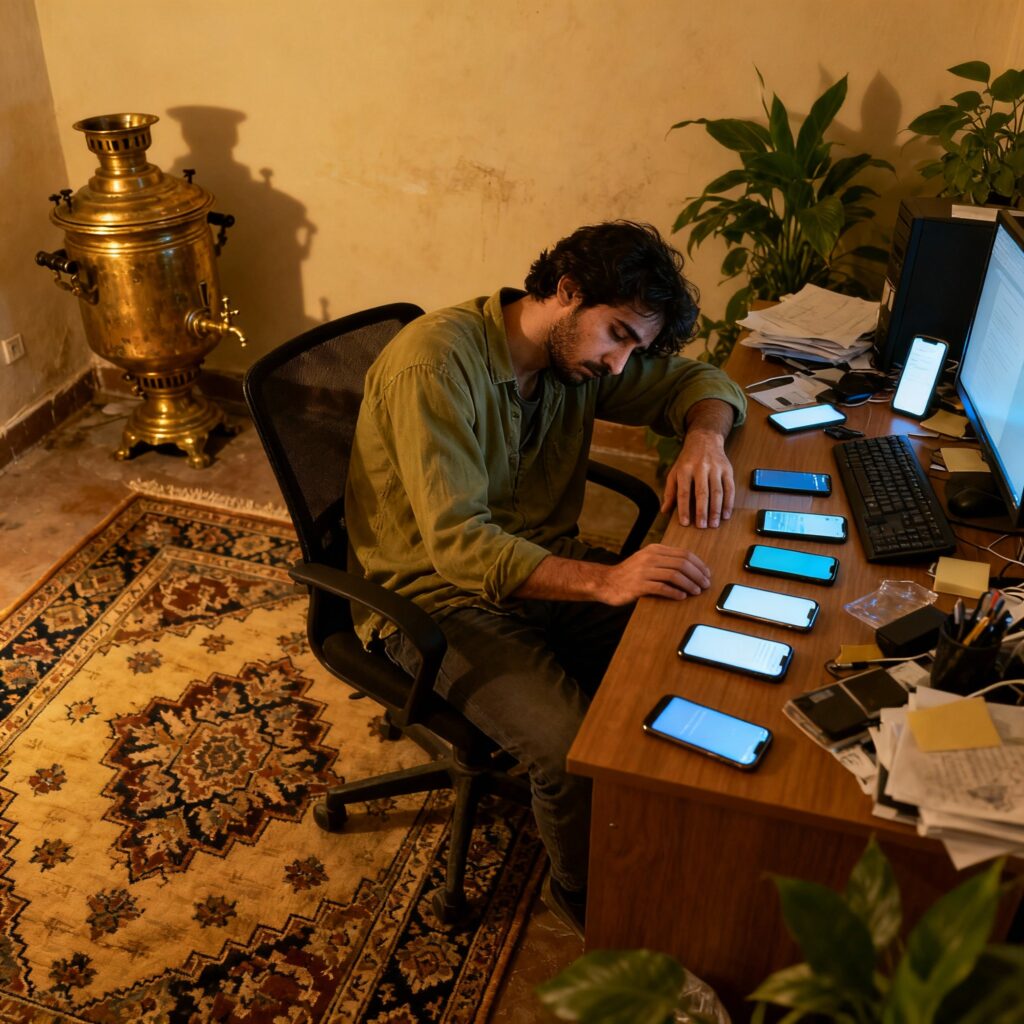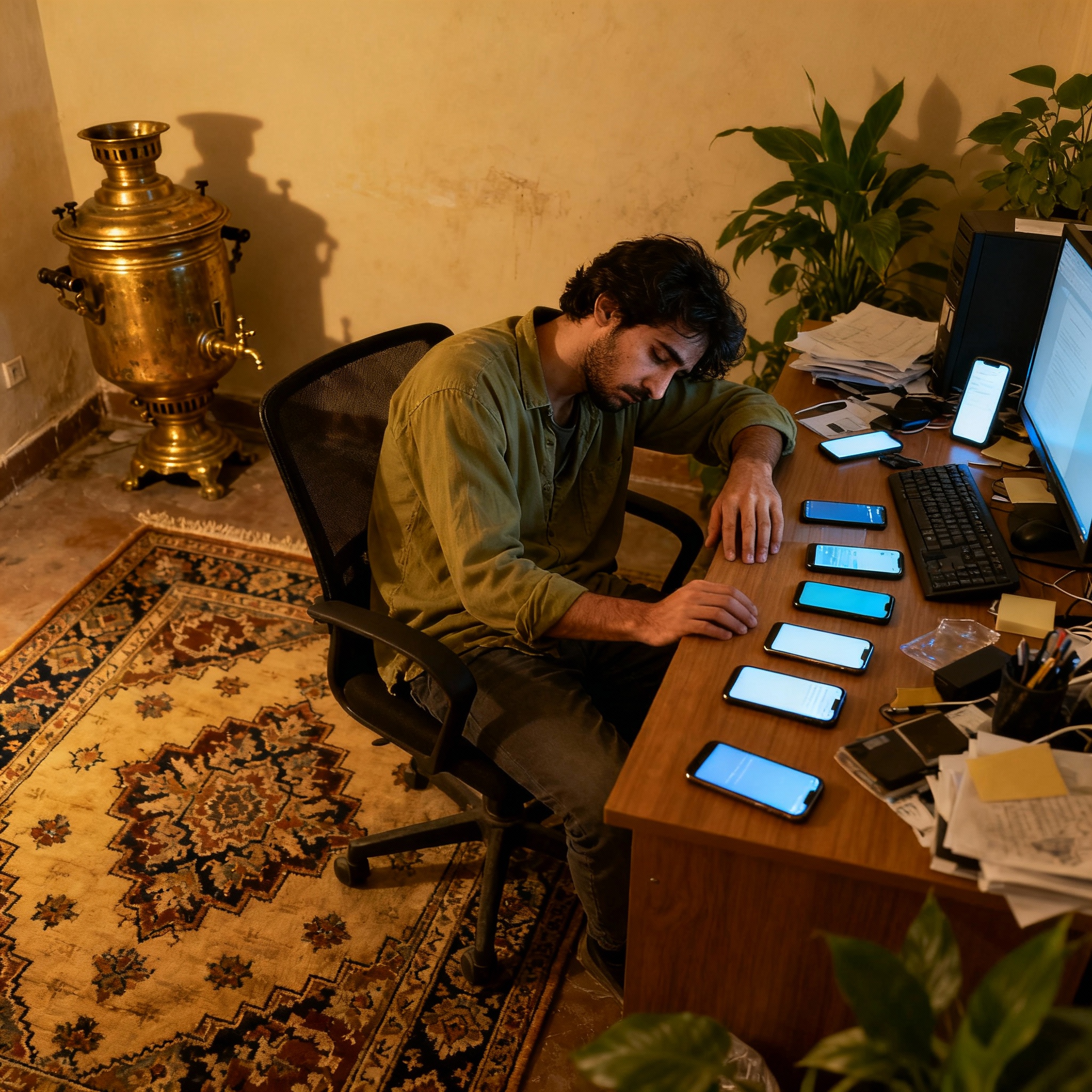By Aubaid Ahmad Akhoon
In the dynamic fabric of human existence, change is not merely a constant—it is the essence of our survival and progress. It shapes our reality, propels us into uncharted territories, and yet roots us in the wisdom of the past. But in this whirlwind of transformation lies a paradox, especially in the realm of health. The very advancements designed to enrich our lives often bring unforeseen challenges, blurring the line between progress and peril.
The paradox becomes stark when we compare our present to the lives of our ancestors. They lived without the comforts of modern healthcare, nutrition science, or digital technology, yet their lives were often marked by resilience and physical endurance. Today, despite unprecedented medical breakthroughs, a growing share of humanity finds itself grappling with lifestyle-related ailments, chronic stress, and a silent epidemic of loneliness.
Take life expectancy. Globally, the World Health Organization estimates that the average lifespan has risen to over 73 years, with Japan and Switzerland pushing well past 84. By contrast, just a century ago, average life expectancy hovered around 34 years. But the story is not straightforward. While modern medicine has successfully curtailed infectious diseases and reduced infant mortality, non-communicable diseases such as diabetes, hypertension, heart disease, and cancer have surged to become the leading causes of death worldwide. In India, where life expectancy now averages 70 years, nearly 60 percent of deaths are attributed to these lifestyle-linked conditions—a sharp reversal from the struggles of earlier generations, who battled malnutrition and infections but rarely obesity or diabetes.
Food illustrates the contradiction well. Our forebears sustained themselves on coarse grains, mustard oil, lentils, and farm-fresh produce, giving them the strength to toil in fields until late in life. In contrast, urban dwellers today are spoilt for choice but trapped by convenience. Ultra-processed foods dominate supermarket shelves, loaded with sugars, sodium, and unhealthy fats. The United Nations Food and Agriculture Organization notes that global consumption of processed foods has risen by more than 30 percent in the last two decades, fueling an alarming spike in childhood obesity and metabolic disorders. India, once synonymous with undernutrition, is now home to over 100 million diabetics—the second-highest number in the world.
Salt, too, tells a story of irony. Mountain salt or “saindhav namak” was once believed to balance the body, yet modern iodized salt, fortified for public health, has become an accomplice in hypertension epidemics when consumed excessively in processed snacks and instant foods. The World Hypertension League reports that one in three adults globally suffers from high blood pressure, and South Asia bears a heavy share. Progress saved us from goiter but left us struggling with strokes and heart attacks.
Our ancestors were physically fit not because they went to gyms but because their daily lives demanded labor—farming, fetching water, walking long distances. Today, fitness has become an industry, but the sedentary nature of work leaves billions vulnerable. The World Health Organization warns that physical inactivity is now one of the top 10 leading causes of premature death. A paradox again: vitamins, supplements, and gyms abound, yet inactivity fuels frailty and disease.
The educational realm mirrors this irony. A generation ago, practical knowledge and apprenticeship were prized, while literacy was limited. Today, degrees and diplomas are plentiful, yet many graduates struggle with real-world application. The employability report by India’s Wheebox in 2024 revealed that only 52 percent of Indian graduates were job-ready despite rising enrollment in higher education. The gap between theoretical knowledge and life skills deepens, showing that academic progress has not guaranteed preparedness.
Healthcare itself has been transformed by progress. Robotic surgeries, genetic therapies, telemedicine, and artificial intelligence have redefined diagnostics and treatment. But the system leans heavily on pharmaceuticals, scans, and procedures, often neglecting prevention and holistic care. The wisdom of Hakeems, Yunani medicine, and Ayurveda—once cornerstones of health in South Asia—is now relegated to alternative niches. Yet studies published in journals like The Lancet emphasize that prevention—balanced diets, exercise, stress management—could avert up to 70 percent of chronic disease deaths. Technology dazzles, but prevention still saves.
Technology’s double-edged role extends beyond medicine. Smartphones, social media, and digital tools connect us across continents, but they also disconnect us from neighbors, families, and ourselves. The World Health Organization in 2024 recognized “digital burnout” and “gaming disorder” as global health concerns. In India alone, surveys by the Internet and Mobile Association reveal that over 50 percent of teenagers spend more than six hours daily online, eroding social bonds and fueling mental health crises. Anxiety and depression have surged worldwide, with the World Economic Forum calling it the “silent pandemic.”
Wealth accumulation, once a distant dream for agrarian societies, has also morphed into a paradox. Material prosperity has expanded access to education, healthcare, and housing, yet it has diluted the essence of community living. The rush for economic gain often sidelines empathy, compassion, and human connection. Happiness surveys, including the UN’s World Happiness Report, consistently show that beyond a certain threshold, more money does not equate to greater life satisfaction. Finland, a modestly affluent but community-driven nation, tops the rankings, while richer countries like the United States rank lower due to rising loneliness and inequality.

In Kashmir, for example, once known for its communal harmony and simple living, modernity has brought both opportunities and disconnection. The younger generation is digitally linked to the world but often alienated from the oral traditions, folklore, and spiritual practices that once defined community resilience. The global story finds local echoes.
This tension between past and present, simplicity and progress, was captured a century ago by Allama Iqbal, who wrote:
“Mashriq se ho bezar, na Maghrib se hazar,
Kar fitrat ka ishara hai ke har shab ko sehar kar.”
Iqbal urged us not to reject either East or West but to embrace change like the dawn embraces the night—acknowledging continuity even in transformation.
The paradox of progress, then, is neither a condemnation of modernity nor a glorification of the past. It is a call for balance. We cannot return to the muddy wells, the coarse salt, or the days without antibiotics, but we can learn from the resilience, moderation, and simplicity of those who came before us. Progress has given us tools, but wisdom lies in how we use them.
As we stand in 2025, the path ahead demands integration—merging the precision of science with the intuition of tradition, the convenience of technology with the richness of human connection, and the pursuit of prosperity with the preservation of empathy.
The paradox of progress is, at its heart, an invitation: to honor the lessons of the past, embrace the opportunities of the present, and chart a future where well-being is measured not only by longevity or wealth but by balance, resilience, and compassion.
The views expressed in this article are solely those of the author and do not necessarily reflect the opinions or views of this newspaper.
The views expressed in this article are solely those of the author and do not necessarily reflect the opinions or views of this newspaper
